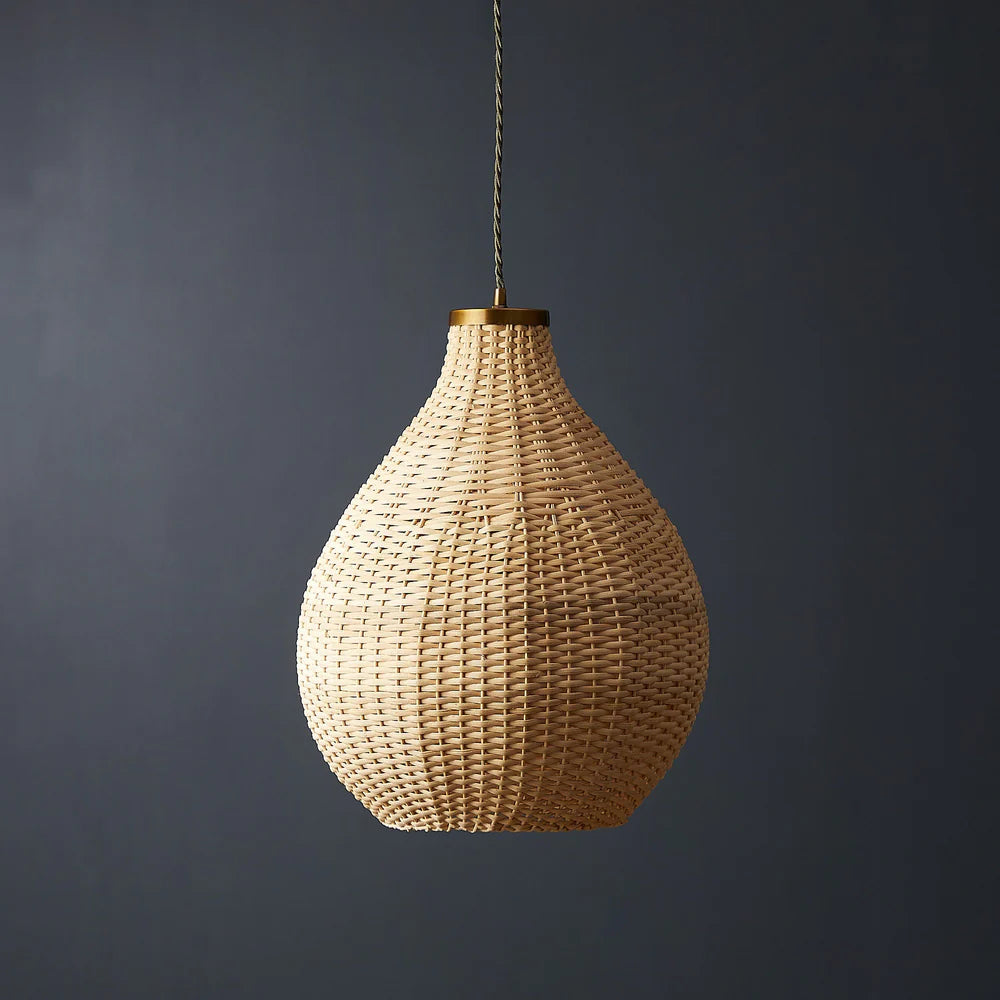Japandi is a brilliant interior design fusion, combining warm, natural Scandinavian design with Japanese minimalism. Here’s how to get the look in your home, plus tips for Japandi lighting…
There has been almost constant buzz about the joy of Japandi interior design for almost a decade now. In essence, it combines the natural warmth of Scandinavian design – the hygge factor – with the pronounced minimalism and Zen aesthetics of Japanese design.
As we discovered, Scandinavian design and Japanese design have many elements in common but there are marked differences too. The secret of successful Japandi design is to create a harmonious blend of similarities and differences. And, as you’ll see, because there’s a distinct subtlety to Japandi design, it’s possible to include elements of it in a variety of settings—the best sort of mix and match.
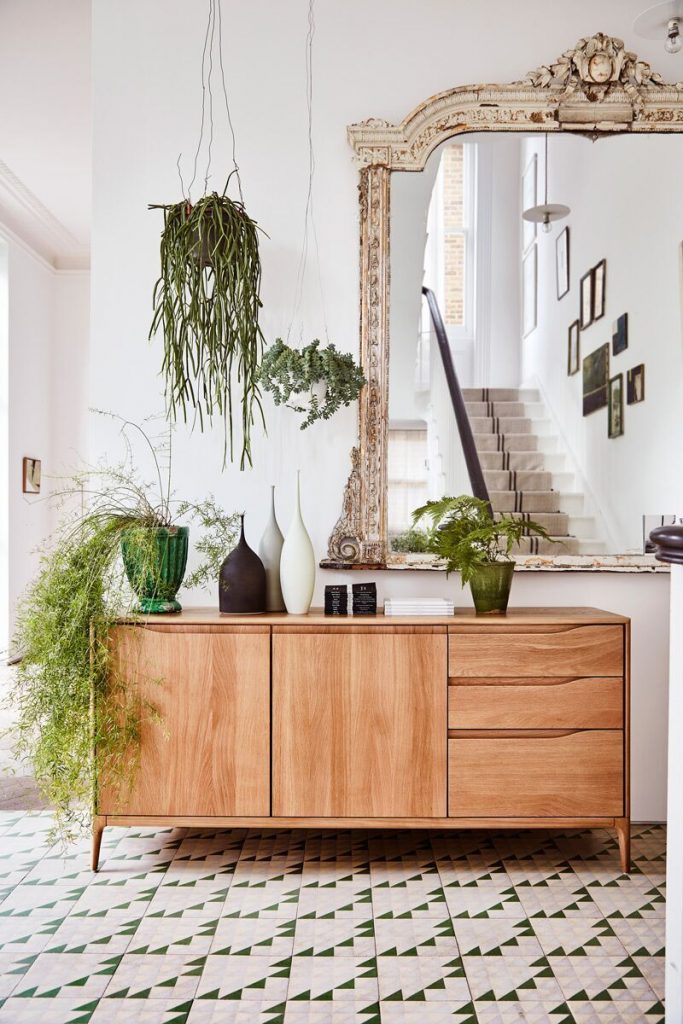
Hall styled by Diana Civil. Read our Q&A with Diana here. Image credit: Diana Civil.
What is Japandi?
Although we may think of Japandi as a relatively new concept, Scandinavian designers have been influenced by Japanese design and artisanal skills since the latter part of the 19th century. Despite springing from very different cultural and spiritual influences, Scandinavian and Japanese design principles are both rooted in a love of craftsmanship, simplicity, light, space, clean lines, natural materials, and the natural world itself.
Japandi combines functionality with pleasing aesthetics, and minimalism with warmth. And it is all about timelessness and sustainability, so it is very much a design approach for the 21st century.
 Kitchen by Tash South of South Place Studio. Read our Q&A with Tash here. Photo: Michele Beatty
Kitchen by Tash South of South Place Studio. Read our Q&A with Tash here. Photo: Michele Beatty
The Japandi fusion
From Japan comes a love of elegant low lines, together with a Zen-like calmness, and as little to distract the eye as possible. From Scandinavia comes warmth, through textiles and an emphasis on comfort.
While natural unpolished wood features in Scandinavia and Japan, Scandinavian design tends to opt for lighter, pale woods; in Japan, darker woods often feature. The Scandinavian colour palette is primarily neutral, while its Japanese equivalent, although muted, makes room for strong dark colours, such as indigo.
Japandi offers the opportunity to draw on all of these elements and bring them together in a unified whole.
 Study by Alex Gardner of Interiordesigned with Pooky's Orb chandelier. Read our Q&A with Alex here. Image: Interiordesigned.
Study by Alex Gardner of Interiordesigned with Pooky's Orb chandelier. Read our Q&A with Alex here. Image: Interiordesigned.
Both design traditions set great store by craftsmanship and artisan skills, so furniture has to be well designed, well made, and comfortable. A beautifully designed chair is seen as a wise investment piece. Both traditions share a love of handmade pottery and ceramics, and the Japanese concept of wabi-sabi, which celebrates imperfection and the beauty of natural ageing, means that cherished vintage pieces, whether furniture or decorative items, have a place in Japandi interiors - although to be truly Japandi, decorative items should also have a functional purpose.
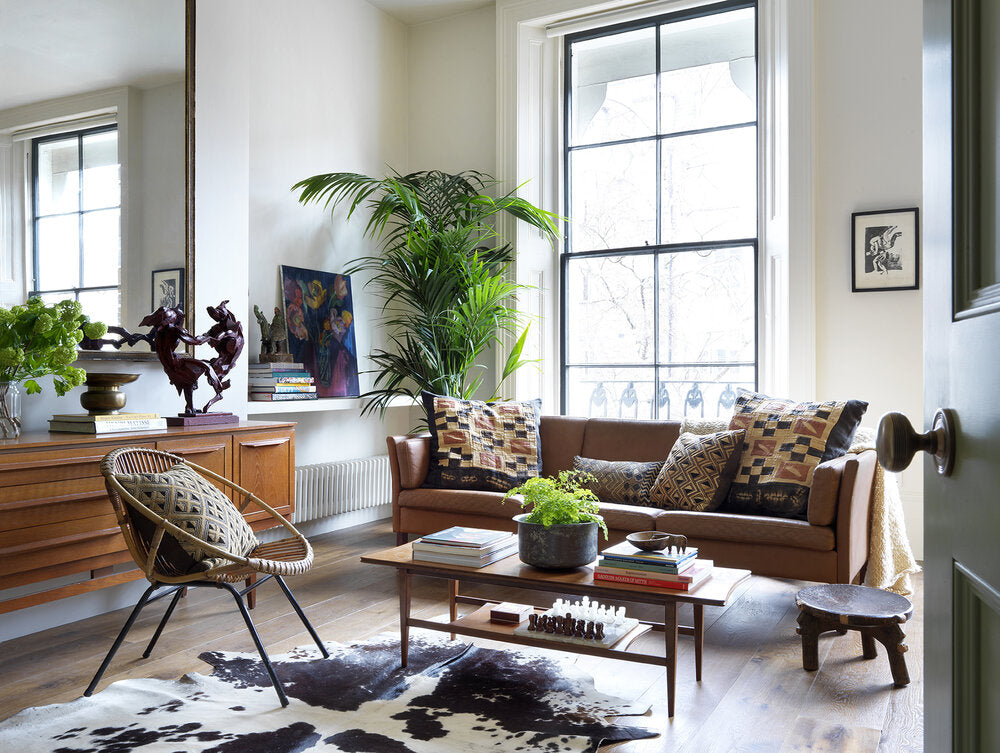 Sitting room by Lonika Chande. Read our Q&A with Lonika here. Photo: Simon Brown
Sitting room by Lonika Chande. Read our Q&A with Lonika here. Photo: Simon Brown
Bringing Japandi to your home - 7 key concepts
If you are drawn to the comfort and aesthetic of Japandi, here is our checklist to help you get started. You may want to dive in and embrace it all, or just incorporate two or three elements.
1) Space – aim for clear, uncluttered spaces and clean lines.
2) Natural materials – opt for materials such as unpolished wood, stone, bamboo, wool, linen, cork, flax or coir for a warm, organic feel.
3) Neutral colours with a plus - choose a neutral base palette of white, gray, beige; add earthy tones and a dark contrasting colour.
4) Functional furniture – look for ergonomic, efficient designs, and high quality materials.
5) Add warmth – take a leaf out of the Danish hygge notebook: choose comforting layers, soft textures, and perfect lighting, of course! A thick wool rug on a plain wooden floor, for example, cushions with just the right amount of give, and cosy throws.
6) Green your space – make your windows work by letting them bring in as much natural light as possible and add large houseplants, which not only look good but can help clean the air too.
7) Keep a balance – when you are considering adding new elements or features, take time to consider what they will bring to a space. Will they enhance that essential sense of calm harmony, which is the hallmark of Japandi?
Japandi lighting inspiration
Pooky's Albus pendant in cane is as naturally simple and pleasing as any Japandi aficionado could wish for. Striking but never overpowering—it’s that balance thing…
Equally pleasing and equally Japandi, in terms of line, material and colour, is our Cecilia ceramic pendant. It also scores extra Japandi points for being artisan made (in a small hillside workshop in Poland, as it happens)
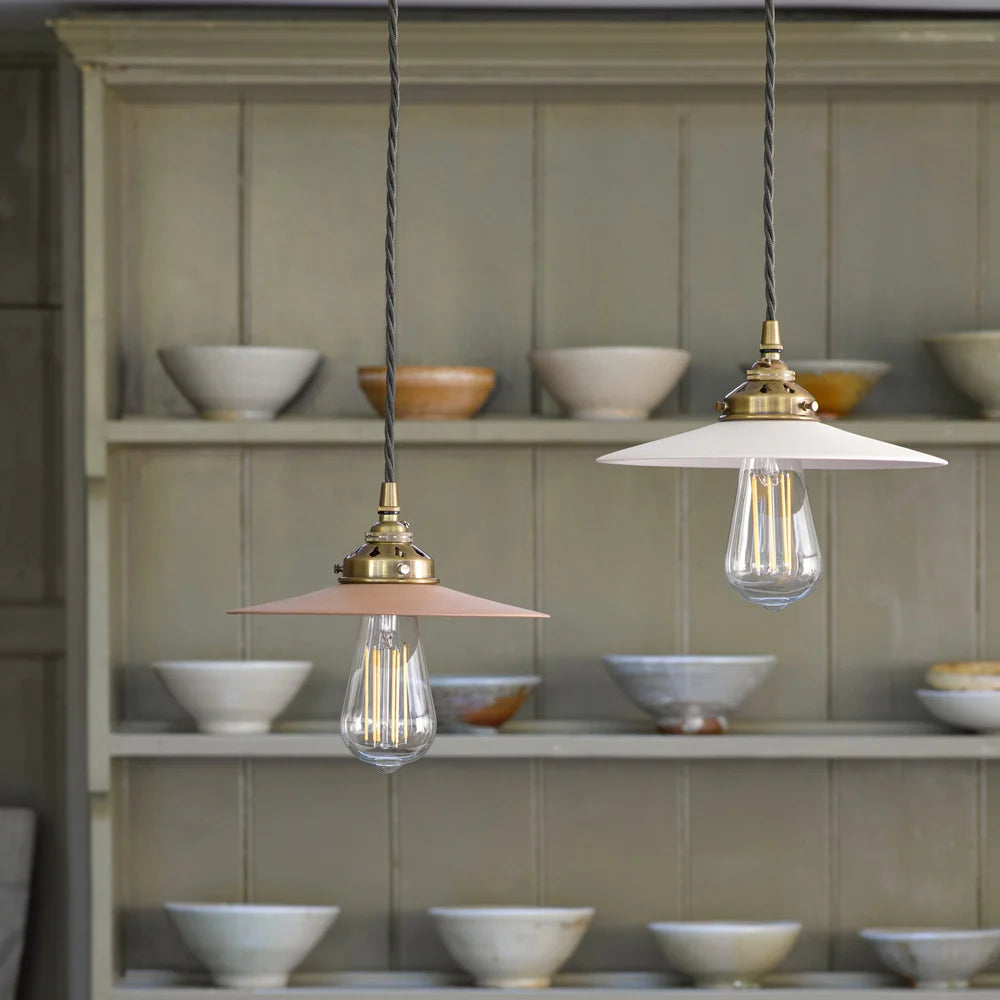
Cecilia pendants in natural teracotta and natural plaster
Japandi celebrates natural materials – so to ease your task, you can search for Pooky lighting and lampshades by your preferred materials… Our lampshade ranges include silk, linen, cotton and jute, for example, and our table lamp bases include cane, ceramic, rattan, seagrass, wood and even ethical, sustainable buffalo bone...
 Gwyneth table lamp in natural and grey bone
Gwyneth table lamp in natural and grey bone
For standing lights, a Mid-Century Modern style floor lamp like the Galore with its classic, clean lines works well in a Japandi setting...
If you want a simple splash of contrasting colour, our linen Shibori shades really do hit the Japandi mark. Shibori is an ancient Japanese dyeing technique and our shades come in various sizes, each one dipped in yellow, green or blue.
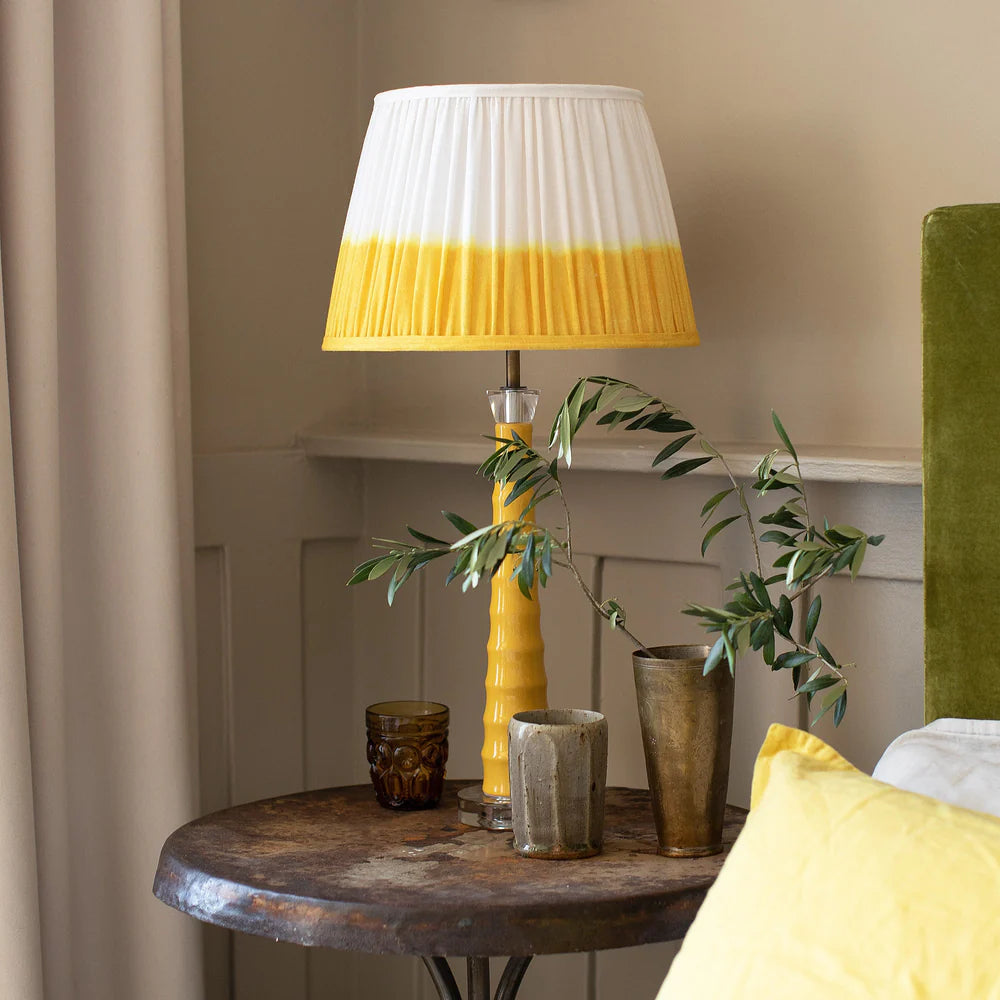
30cm straight empire shade in yellow Shibori linen
Is Japandi for you? For ideas and inspiration, try Japandi Style by Agata and Pierre Toromanoff. Published in 2022, it includes the story of Japandi and its underlying principles; examples of classic Japandi designs and the studios behind them, and guidelines on decorating and furnishing specific rooms.
Pooky make beatiful, unusual lights for beautiful rooms. Browse our full range of lamps, shades and more.
See also:
Classic interior design styles and how to light them – Zen
Classic interior design styles and how to light them – Scandinavian
Hygge, happiness and lamps – how to cosy up your home with the danish art of contentment
Image top: Islington apartment by Space A. Photo: Ben Tynegate


